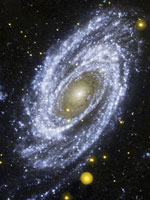Every scientist I know has a low opinion of the standard of public discourse when science is involved. We all agree something must be done about scientific literacy in society.
So here’s the challenge. I have one semester, 3 credits and 37.5 hours of class time to do something about it. My students will do little science ever again. Because of K-12 education, many of them loath science. I can assume no previous scientific knowledge.
Many colleagues have been interested in how I am dealing with this challenge. The overall ‘philosophy‘ is as follows. For specifics, see course mechanics. For additional ruminations, sort my teaching blog by categories Pedagogy and Thoughts about SC200. If you are of the generation that doesn’t read but does watch videos, I talk about the course here and here. I summarize my thinking in this article in the Journal of General Education.
Core action points
 1. To make the course attractive to students, we need to do it all through exciting case studies. The more contentious the better. This also has the merit that much of the course is narrative story-telling, like movies and novels. Which, all else equal, people like way better than dry and turgid expositions.
1. To make the course attractive to students, we need to do it all through exciting case studies. The more contentious the better. This also has the merit that much of the course is narrative story-telling, like movies and novels. Which, all else equal, people like way better than dry and turgid expositions.
2. It might be possible to construct a list of scientific knowledge/facts that citizens of the 21st Century ought to know – but it will be longer than I have time to present, and much of it may ultimately be of limited use. Science and society both move too fast. Stems cells were never mentioned in my undergraduate years. Nor was society asking whether fish feel pain.
3. What we do need in the leaders and citizens of the future is an appreciation of the scientific method (not least why it works and what it can deliver) and an ability to assess the science presented in the media (SCIENTISTS DISCOVER HEALTHY DIET (!)). I also think a key problem in public discourse is that people can not think probabilistically, yet scientists do, not least because that is the only way to assess risk and benefit.
 4. We scientists really are a strange breed. We think differently from normal people. Both the public and scientists need to appreciate this – and make allowances.
4. We scientists really are a strange breed. We think differently from normal people. Both the public and scientists need to appreciate this – and make allowances.
5. Young people don’t like writing essays; Faculty don’t like marking them. But young people do like social networking (Facebook, Twitter, Twatter, Twaddle and all that). And colleagues, particularly Chris Long, a Philosophy Professor here, have been having a good time teaching via blogs. It gives the students ownership of the course, their work gets read by the whole class and even beyond, and real dialog can occur. And since the good folks at Education Technology Services (particularly Chris Stubbs and Cole Camplese) were so supportive, I thought I’d give it a whirl. There is a chance this will not only increase the caliber of the course, but it might also make learning (and teaching?) more fun. (Thanks to Tara Carson, a serious Twit, for urging me to consider social networking and pointing me to Cole).
 6. This from Dean Larson: we need to demonstrate just how much impact science continues to have on how we view ourselves and our place in the universe. And he is right. It is amazing that it continues to reveal shocking new truths (or, put another way, it is amazing how ignorant we still are). So we are going to do sessions on the paradigm shifts that have happened in the life times of our current students (for instance, we used to think we understood what the universe was made of, and indeed what we were made of – and we used to think mating partners were on the same side). I am also going to pluck up the courage to predict paradigm shifts that might happen in the next twenty years. At the very least, that’ll be good for a laugh in 20 years….
6. This from Dean Larson: we need to demonstrate just how much impact science continues to have on how we view ourselves and our place in the universe. And he is right. It is amazing that it continues to reveal shocking new truths (or, put another way, it is amazing how ignorant we still are). So we are going to do sessions on the paradigm shifts that have happened in the life times of our current students (for instance, we used to think we understood what the universe was made of, and indeed what we were made of – and we used to think mating partners were on the same side). I am also going to pluck up the courage to predict paradigm shifts that might happen in the next twenty years. At the very least, that’ll be good for a laugh in 20 years….
 7. People like well posed questions to ponder over, especially if they are answered. “What do socks and Notre Dame’s stained glass have in common” sounds much more interesting than “Nanotechnology”. Why don’t we always teach to questions? That’s how we work and think. [Thanks to Mary Beth Williams for the sox]
7. People like well posed questions to ponder over, especially if they are answered. “What do socks and Notre Dame’s stained glass have in common” sounds much more interesting than “Nanotechnology”. Why don’t we always teach to questions? That’s how we work and think. [Thanks to Mary Beth Williams for the sox]Putting all that together, we now have a question-centered course with traditional class work, a course blog the students have to participate in, electronic class room voting, real time electronic back-channel communication in class (for the student too nervous to put up his hand) and what seems to me to be an outrageous list of topic questions and scientific problems that I’ll use to illustrate them. I hope these will attract the students, and keep them so interested they won’t even notice how much stuff they are taking on board about hypotheses, inference, randomness, study design…. and what science really is, why it works, and how it ends up looking in the real world.
Like:-
Do powerful people know best?
 Is smoking bad for you? Is passive smoking?
Is smoking bad for you? Is passive smoking?
Why are scientists geeks?
When does non-science kill?
Does HIV cause AIDS?
Does prayer heal?
Are vaccines dangerous?
What are we?
Do fish feel pain?
What is the universe made of?
Why are males toxic to their mates?
All of that has to get distilled into some formal teaching objectives. They sound a bit stodgy to me. I rely on what I think are stimulating questions and topics (‘case studies’) to make students interested.

This is remarkably insightful. I enjoyed reading the post and at the same time I just learned a lot more about science, its discoveries and experiments. I hope to read more insightful posts like this.